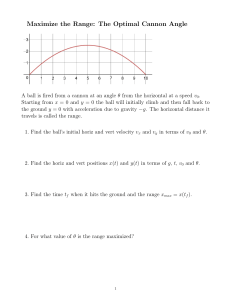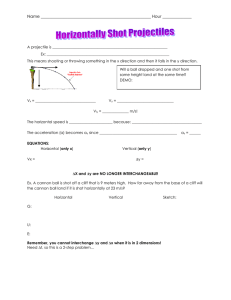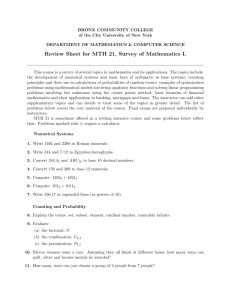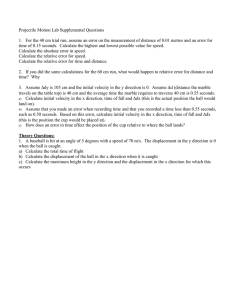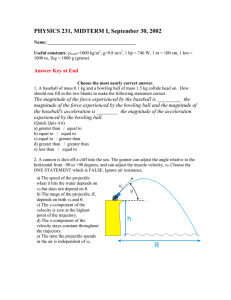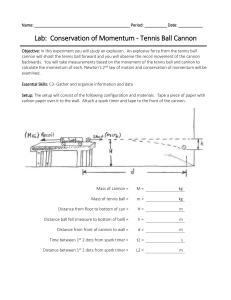Physics I – Exam 1 – Spring 2003 Answer Key
advertisement
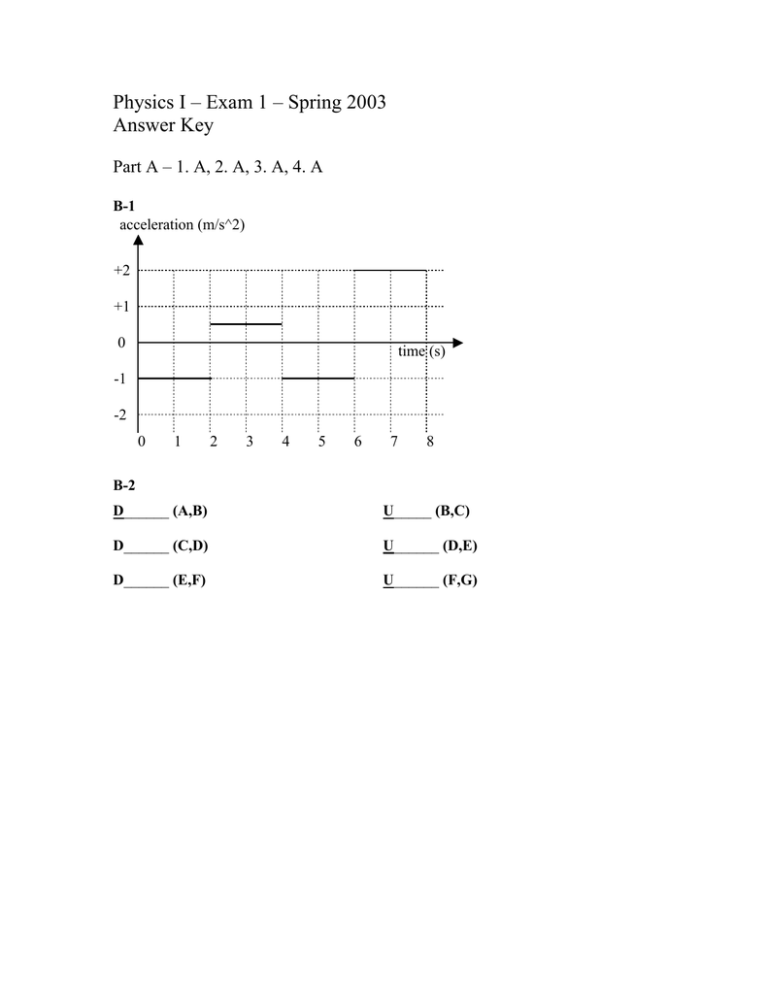
Physics I – Exam 1 – Spring 2003 Answer Key Part A – 1. A, 2. A, 3. A, 4. A B-1 acceleration (m/s^2) +2 +1 0 time (s) -1 -2 0 1 2 3 4 5 6 7 8 B-2 D______ (A,B) U_____ (B,C) D______ (C,D) U______ (D,E) D______ (E,F) U______ (F,G) B-3 W mg WNm Nm v2 r v2 mg r N v2 245 2 1 1 5 1 4 W rg 1225 9.8 B-4 Method 1: v v 0 0 588 t f 60 s a 9.8 h y y 0 v 0 t 12 a t 2 588 60 4.9 3600 17640 m Method 2 v v0 0 588 2 h y y0 f 17640 m 2a 2 9.8 2 2 C-1 The key is to subtract the climber’s weight (637 N) to get the total or net force versus time, then use the impulse-momentum theorem. (Initial speed = 0.) Net Force (N) J = area = -325 N s = p p 325 v 5 m / s m 65 Speed = 5 m/s. 0 0 0.2 2 time (s) -325 C-2 The key is to realize that horizontal (X) and vertical (Y) motions are separate. We need to find the time the cannon ball hits using the vertical motion, then find the horizontal displacement at that time. v 0 y v 0 sin( ) 49.0 m / s v 0 x v 0 cos() 84.87 m / s Method 1: Separately find the time to get to max height, then time to fall down. v f v 0 y 0 49 t1 5 s y y 0 v 0 y t 12 a y t 2 367.5 49 5 4.9 25 490 m ay 9.8 The time for the cannon ball to fall 490 m with zero initial velocity: 490 2 0 490 4.9 t 2 t2 10 s 4.9 The total time is t t 1 t 2 15 s . Method 2: Use the quadratic Y equation to find when the cannon ball is at Y = 0: 0 y y 0 v 0 y t 12 a y t 2 4.9 t 2 49 t 367.5 0 Solve the quadratic equation and take the positive root for positive time: 49 49 2 4 4.9 367.5 t 15 s 2 4.9 Having t, it is then straightforward to solve for the horizontal displacement: x x 0 v ox t 84.87 15 1273 m
